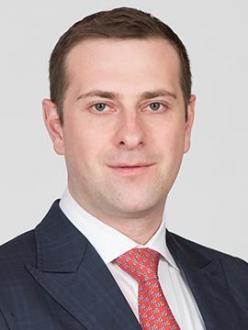Strategy & Practice Management
Products and Services: How Can Wealth Managers Optimise Their Revenue Models and Increase Mandate Penetration?

Dr. Silvio Struebi of Simon-Kucher Global Strategy Consultancy
Nov 5, 2018
If Asia’s wealth management industry is to adapt its business models and sustain growth in the future, it needs to be able to convince their clients that the offerings represent value. Hubbis and co-host Simon-Kucher & Partners assembled a group of wealth management experts to discuss how to achieve this goal.
Executive summary
Hubbis and Simon-Kucher & Partners, a global consulting firm focusing on monetisation and sales, co-hosted a fascinating discussion on strategies to optimise the revenue mix for private banking and wealth managers in Asia. The discussion covers the challenges facing the wealth management community in the region and how new sales processes and greater discipline in the pricing of services will help the industry enhance revenues and improve client relationships.
The discussion covered many areas that are crucial to the current industry-wide efforts to redefine strategies and business models for the world ahead. Is there a need to evolve the way private banks charge clients for the products and solutions they offer? How will they achieve the move away from ad-hoc advisory towards a clear service model with a fixed-fee? Is the advisory and discretionary model that is working so well in Europe applicable to Asia?
Topics also included ways in which wealth management firms can differentiate themselves. How can we optimise pricing to achieve greater client retention? How can banks improve their way of handling price negotiations? Are different approaches required for established vs. new clients? How can the best practices of client servicing and monetisation from other industries be applied to banking?
The consensus apparent during the discussion was that private banks should continue to strive towards shifting more of their business to recurring revenues derived from discretionary portfolio management mandates and to advisory relationships. However, the wealth management industry must pay greater attention to the current and future needs of the younger generations who will inherit or create Asia's future private wealth. The big challenge is to stay relevant and offer a competitive edge to Millennials.
Convincing clients of the added value and uniqueness of their propositions still remains an uphill struggle. Accordingly, pricing the offerings sensitively, adeptly and reinforcing the value proposition - both of which private banks haven't been historically good at - are core to the effectiveness of these strategies.
FEATURE
Pricing and discount optimisation are vital topics for private banks and other wealth management providers. If they want to win a greater proportion of their clients' wallets and shift more of their business away from outdated product-driven models – where fee compression appears inexorable, then the wealth management industry must become far more adept at monetisation strategies.
The private, entirely off-the record closed-door event hosted by Hubbis and Simon-Kucher included a wide variety of senior participants from Asia’s wealth management industry, including private bankers, asset and wealth management firms. A broad spectrum of ideas were discussed, and the overall impression at the end of the discussion was that the industry is still struggling to forge a new identity in the region, hampered perhaps by the core differences in the attitudes of Asia’s ‘newer’ money clients compared with Europe’s older money clientele.
The discussion began with a brief introduction from Silvio Struebi, a Partner at Simon-Kucher based in Hong Kong and Singapore, and from Jan Engelke, Managing Partner in Switzerland. Simon-Kucher has 1,200 staff in 38 offices globally and half of the firm’s revenues come from monetisation projects across all industry types. The other half is generated through sales, strategy and product management initiatives.
Their message was that there are large differences between the Asia region and Europe and they firmly believe the topics of value monetisation and pricing optimisation need addressing in a more professional manner for sustainable growth and superior service in the long run.
The roundtable began in earnest with a senior private banker expressing the gravity of the situation. “I am very interested in the concept of managed assets,” he noted, “because it is my conviction that the traditional private banking business we see in Asia, i.e. the transaction-oriented business, is dying due to far cheaper alternatives, such as online trading. We are even seeing providers talking about providing securities transactions and FX for free in the future.”
On top of these concerns, he highlighted intensifying regulatory hurdles, which, in combination, are more or less forcing the wealth management industry to move to higher value services, such as advisory and discretionary portfolio management (DPM).
Slow progress
“However,” he observed, “I think we can acknowledge what we are all seeing, namely that progress is very slow. In fact, I am astonished by the lack of success in this endeavour. I am hoping to glean some valuable insights here today to help us come to terms with these challenges.”
“I agree,” said another senior banker. “We have tried everything. We have tried educating the individual relationship managers to increase their conviction on these initiatives in order to have convincing discussions with clients. But I will be honest and say we aren’t really succeeding in raising their conviction levels. We must keep trying – everyone knows that if they begin the year with, for example, USD150 million in assets under discretionary management, they have already booked USD1.5 million in revenues. So, it makes a lot of sense. Nevertheless, we really haven’t found the secret to convincing RMs and clients.”
Provide the right incentives
Simon-Kucher’s Jan Engelke then added his insights. “The wealth management industry needs to provide relationship managers (RMs) with the incentive to transfer clients to advisory or discretionary mandates. Incentivisation is a vital topic because if the RM isn’t properly encouraged financially, then why should he or she make the effort to broach these difficult subjects with their clients? You must evolve your incentive systems, so the RMs see a clear benefit from the changes."
Reinforce your value
He also advised that value creation and effective communication of that value are essential – for both RMs and clients. “Is the client really aware of the value you offer?” he asked the assembled wealth management professionals. “We believe that there is significant room for improvement on communication and client experience because if you can’t enforce a price, that means you aren’t delivering the right value, or at least, the client is unable to perceive it. Prof. Hermann Simon, the founder of our firm, always says, ‘pricing is strategy implementation’. When we talk about value, we mean every aspect of the value you deliver. It is brand, it is service, it is advice, and it is access to specific markets, all of which come together in pricing.”
Providing an example, Struebi explained, “A major private bank that we worked with sends its clients regular risk alerts across all the key communication channels. The client receives them with explanations, so the value offered by the bank becomes more tangible. Risk management is suddenly less abstract and the value becomes evident. The bank can then follow up with specific investment recommendations. For example, in a project for another bank, we made information about the changes to DPM portfolios available to clients, so that they would feel included in the asset allocation process and would be able to appreciate the immediacy and transparency offered by the bank.”
Support RMs in improving the client experience
Struebi also noted that training must be emphasised on a continual basis to ensure high-quality sales processes and proper pricing competency. “Working with the RMs and advisers to go through the whole client process and understand needs, supporting them with concrete proposals, documents, really helping them on a day-to-day basis to improve the client experience – this is what is required. It isn’t enough to only do this occasionally; it needs to be consistently applied. We also understand that sometimes specialists need to take over from the RM to have these pricing and relationship conversations with the clients if things aren’t moving in the right direction.”
Switching from product-centric to client-centric service models
“How do we differentiate pricing between different clients, such as an individual or a family office?” asked one attendee. “Some clients might look at pricing not based on product basis but on the relationship.”
Engelke replied that there are three core segments: smaller, individual clients; the largest clients; and the majority that are somewhere in between.
“At the moment, everything is product driven. But you can also look at it from a holistic point of view that combines all the client’s activities and offer them a cheaper solution based on the overall client relationship, including lending and other services. That way, you also incentivise cross-selling among team members in different areas and incentives need to be incorporated accordingly. This holistic approach to drive revenues will be the most important aspect in the future because margins on products and certain services are falling, therefore you need to get more out of each client.”
Another senior banker advised the attendees that in order to help create more DPM mandates, they should remove the credits for ‘trailer’ fees in self-directed accounts. “You will quickly find this helps RMs move more clients to DPM decisions. Moreover, many clients have relationships with several banks and institutions. But why respect these lines in the sand? Shouldn’t you try to compete in some areas with other firms? Should you service a client solely on FX if that client says he only does FX with your bank? No, you can offer him a wide variety of services and products.” The banker’s message was to expand the client relationship as much as possible, build the broadest possible portfolio with them, and compete in as many areas as possible.
Seek out the unique value propositions
“Our advisers have seen that clients’ portfolios are diversified across a wide range of investments and capital markets to help them benefit from different aspects of financial and nonfinancial markets,” he added. “You should also be able to offer access to relatively unique investments, such as private equity, specialised real estate or collectable investments. But at the same time, the capital markets aspect is important to help clients invest tactically. Balancing these various elements is essential to ensure the portfolio is both diversified and in tune with market cycles.”
He also questioned the obsession with winning DPM mandates. “Unless you think your DPM managers are the best performing managers in the world, and consistently so, I would question whether it is the right thing for you to promote that to your client. If the client sees other managers performing better than you, then the AUM flow out the door. A better approach might be to give your client access to a range of interesting and differentiated opportunities.”
Ensure clients feel included, but control their emotions
This discussion participant also reasoned that, by definition, DPM disengages the client from most of the investment decision-making process. “Clearly, I am biased as I look after our markets and investments, but my view is that you must be balanced, as you want clients to be engaged. You want them to be making at least some of the decisions themselves because it is their money. Moreover, again related to balance, if the clients are up to speed with the markets, they will better understand what the DPM manager is trying to achieve.”
A fellow attendee agreed that DPM decisions are indeed the responsibility of the bank or wealth management firm and that they are accountable for those decisions. “It is important therefore to let the client feel included in making the decision and able to choose the timing of the decision themselves. But throughout the DPM process, we also need to help manage clients between the extremes of panic and enthusiasm. We need to carefully and objectively manage their emotions, and for that, the DPM mandate is very helpful."
Wealth management talent still exists
Another problem raised by a participant was whether the talent pool is large enough to sustain growth and drive the model of revenue evolution towards a more sustainable and predictable advisory or discretionary model.
“Younger bankers are learning their trade at universal banks and migrating to wealth management when they are more experienced,” replied another senior banker. “So, I don’t think the talent pool is really drying up. However, maturity is required to be a successful RM and it isn’t surprising that the average age of RMs is currently over 40, which is about the right age for this type of role and the types of conversations required.”
Expertise counts, but RMs need to match clients
The same banker also commented on the allocation of bankers to clients, for example, when a RM leaves the bank to go to the competition. "It shouldn’t only be about age; it is also about personality and other commonalities," he observed. "We need to match clients and bankers more effectively in the future. We know that 15 to 30 percent of the clients don’t fit the relationship manager, so we need to improve in this area as well.”
However, another senior private banker took a contrarian view. “We have seen bankers around the age of 27 perform remarkably well at our [global] bank,” he reported. “Some of these individuals have the talent and the discipline to be great private bankers, even to some of the wealthiest families in Asia. So we hunt for the right talent, whatever the age. What I want is someone who is extremely good in connecting with clients, servicing clients; someone who is driven, smart, and able to deliver the whole firm.”
Another participant suggested looking at this from the hunter/farmer perspective. “Does the younger banker – typically, the hunter – have more success, or is the older banker – generally, the farmer – more successful because he has all the tools and the requisite experience? Does the younger banker have greater energy and therefore more success? Does the older banker already hold so many clients, he only wants to farm and not hunt anymore?"
A different banker replied that this line of thinking only considers the bank’s standpoint, whereas from the client’s perspective, they may want someone with experience, who has seen some crises; someone who has proven themselves as a banker and is stable. “I genuinely feel that some grey hair is a plus overall in this business,” he remarked.
And another expert noted that there are negatives associated with the younger generations of HNWIs and their relationships with banks and wealth managers. “They are so used to price comparison,” he said. “They are hyper-critical in terms of comparing one product to another purely on performance. They go online and find five different prices. Therefore, we will likely move away from a stronger weighting on the relationship to a stronger weighting on outcome and pricing. If you push DPM, you must perform and prove you add value, but that is tough to achieve consistently.”
Be a specialist - provide acute expertise
One expert commented that the RM’s skills should be supplemented with the proficiency of the wealth management’s broader array of expertise and support services. “You need the right specialist in front of the client with the right contact frequency,” he said. “However good he or she is, your average banker isn’t going to be an equity specialist, a private equity specialist, a bond specialist, and know all about ETFs, derivatives, and structured products. Therefore, they won’t be able to accurately describe the full value proposition.”
Accordingly, showing and then reinforcing to the client the full range of the bank’s capabilities will help win and retain clients. “In this way, you not only show the client the whole bank from a wide-angle perspective, it also helps train up future generations of successful private bankers from within, making sure you can show the more junior staff a career path that allows them to encounter the widest range of products and services within the bank.”
The final word on RMs’ skills and personnel came from a senior banker who emphasised discipline. “Our major challenge,” he explained, “is finding disciplined RMs who will help clients stick to the long-term investment commitments. Looking at the bigger picture, scalability is also important. We need to push DPM because it is a much more scalable business than traditional transaction-based business. The marginal cost of DPM is lower than the marginal cost of advisory.
Technology will disrupt, but less so in the UHNWI space
The discussion moved on to technology and its impact on the industry’s business models and pricing. “Fintech and online service providers will provide huge disruption to this market,” one expert said. “Fintechs can innovate in a way the big banks simply cannot, and prices for many services in our industry are already coming down and will continue to drop further and further.”
Nevertheless, he also noted that the UHNWI segments will be less prone to price erosion due to Fintechs or other new competitors, while most of the disruption will be in the retail or higher-end retail – priority banking – segments.
“Luckily,” he said, “larger clients see the human relationship as core to the private wealth market proposition; they want to talk confidentially to people, not machines.”
Wealth transition brings new issues
However, “having said this, these clients and most of those in this room today are older people, whereas in 10 to 20 years, the younger generations then in control of the wealth will have grown up on all the new media and will more readily embrace robo-advisory and other technologies.”
Struebi said “new players will become a significant threat in the future when Millennials are in the driver seat. Banks need to address the evolving customer expectations, master customer loyalty and stay relevant in the long run”.
The discussion then migrated from the direct impact of digitisation to losing or retaining client money across generations. “Have any of you here created anything resembling a plan for the value proposition you represent to younger people?” asked one participant.
“For example,” he continued, “the younger generations may prefer to deal with some of the independent asset managers rather than just take over the relationship with the private bank their parents worked with. They might respect those bankers because of the trust and relationship, but in the end, they will be more results-oriented. They will focus on what true value you can create for them, rather than on the strength of the relationship or delivery for the family over the previous years or decades. We are talking here about what will become the ‘new normal’. It isn’t a matter of whether we have a proper fee schedule or business model. In the end, it is how we are being defined by our clients."
Listen to the client
Other attendees concurred with this view. “We need to find out from the clients what they want, as some would prefer DPM, some advisory, and some to do it alone,” said one banker. “We have to find out what the value drivers are for each client and each of the generations.”
“We need to define how we monetise the value we offer,” added another participant. “And then how to communicate that to the clients in a new value proposition.”
“Yes,” agreed another attendee, “if we try to sell our value only in terms of performance, I think we will have a really hard time to survive in this industry. We also need to position our value in terms of risk. We are, after all, risk managers. If we focus our communication on the risk element and try to steer away from the performance discussion, we will be better positioned for longevity and success.”
He cited the example of a client who had a bond portfolio yielding around four percent. The same client bought some junk paper yielding over eight percent and then told the bank they were underperforming and that he had performed better without their help. The client closed the account, telling the bank it wasn’t professional.
“This is where education comes in,” he explained, “because performance and risk are clearly both elements in the equation. But from this, we can again extrapolate that the discussion shouldn’t be about performance. We need to discuss risk and outcomes together. We need to market ourselves as risk managers that help the clients sleep well at night, help them stay rich."
The discussion closed with questions over the performance of certain wealth management-centric bank stocks, for example, those trading far below their historic highs. "This is a reflection of how the market views the future performance of certain banks in developed markets,” observed one expert. “So from that, it clearly looks bleak from a markets perspective. What can be done to turn this round?”
Engage the client
“Cutting costs won’t do much without growing business,” a senior banker noted. “Win more clients, win a larger share of their wallet. And as you grow your client base, you need to expand as sustainably as possible. Looking back to the years around 2006 and 2007, the speed at which banks were hiring RMs was clearly unsustainable. We need to temper expansion to meet the realistic expectations of new business. We need to expand by engaging our clients holistically, across a wide range of investments, delivering returns, managing their investments, managing their risks, while remaining realistic.”
“And that is another reason why we need to boost mandates,” interjected another senior banker, “as we need much better predictability in terms of revenue streams.”
To conclude, Struebi advised the bankers to price their recurring revenue offerings, such as DPM and advisory mandates, at a sensible level, as the clientele needs to get used to these propositions with recurring service and fee elements. “Over time, you will be able to upsell them holistically into other product areas with a better revenue management,” he said, “but you must get them on board first.”

More from Dr. Silvio Struebi, Simon-Kucher Global Strategy Consultancy
Wealth Solutions & Wealth Planning
Future-Focused Family Offices – Challenges for Sponsors and Opportunities for the Wealth Industry
Strategy & Practice Management
Why are Most Digital Banks Not Profitable? Global Consulting Group Simon-Kucher Has Some Ideas
Strategy & Practice Management
The Future of Private Banking: Lessons from Big Tech Unicorns, Mainstream Media and Fintechs
Latest Articles






